A Sort of Modern Kinetic Art.
by giuliom95 in Workshop > Furniture
5189 Views, 62 Favorites, 0 Comments
A Sort of Modern Kinetic Art.
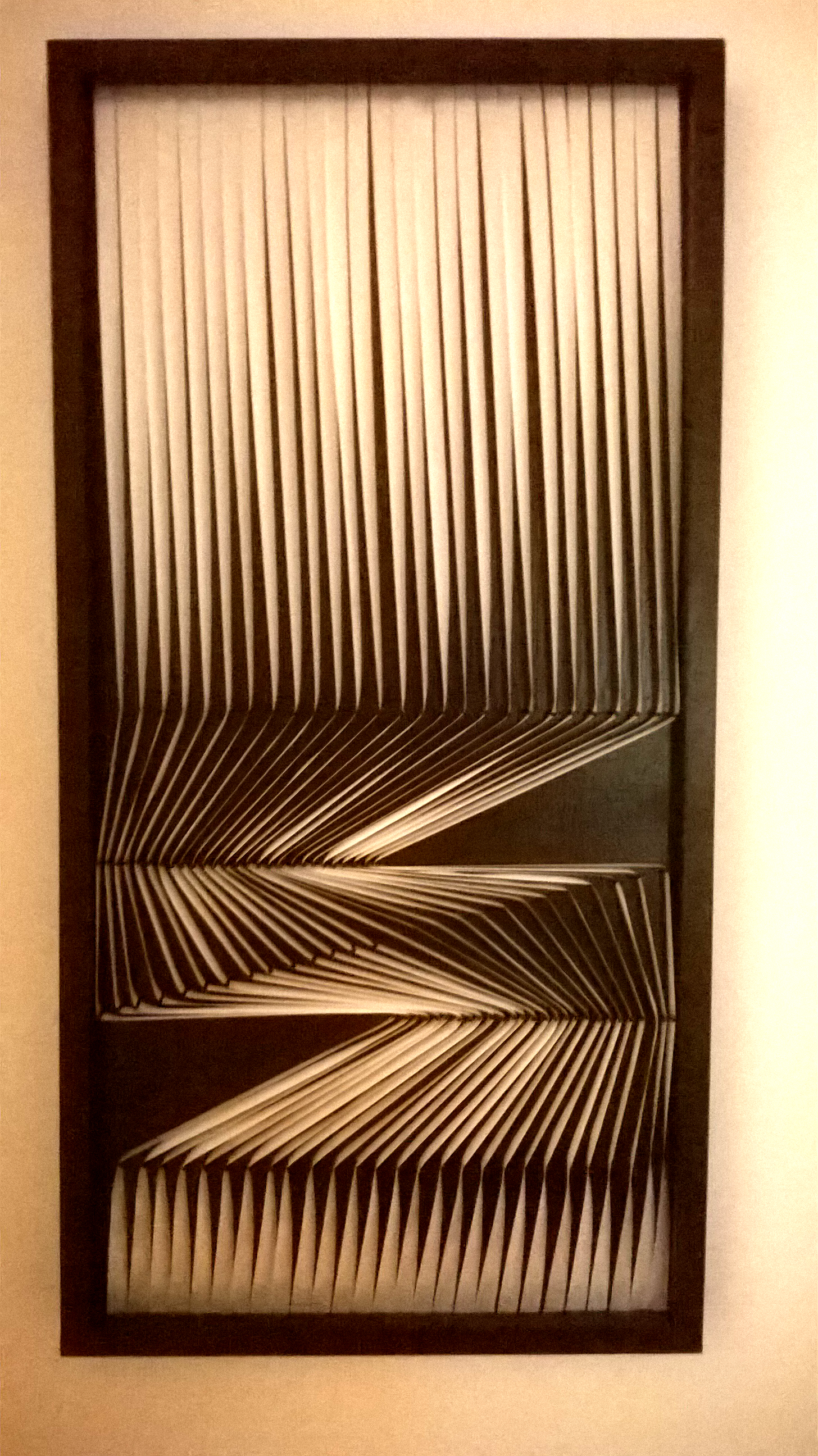
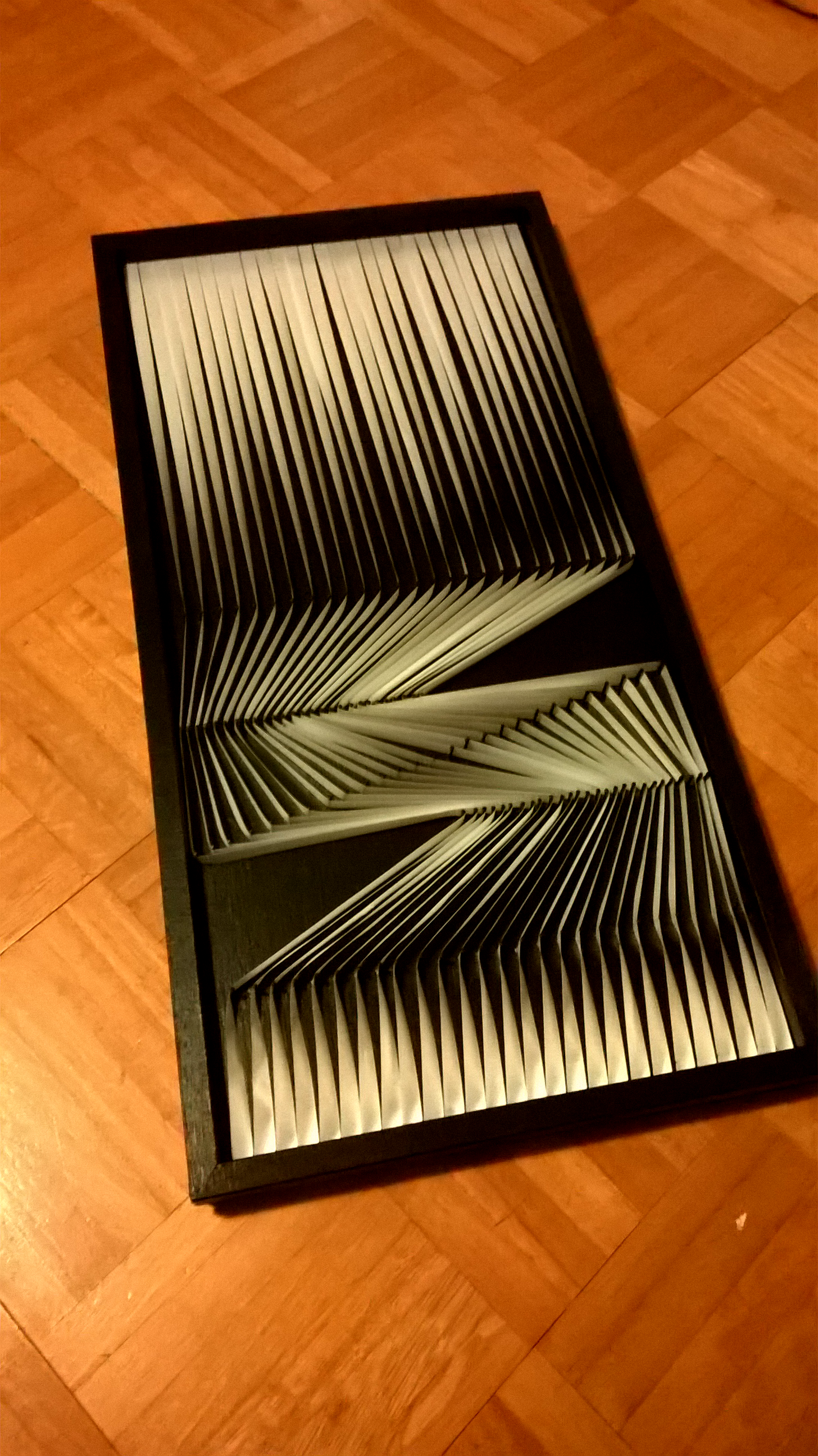

Hi all!
In this instructables I will explain how I've created my personal kinetic art using cheap materials.
Kinetic art is a very general expression that encloses every form of art that is related to movement or the illusion of it. In this case the movement is performed by the observer: the "sculpture"(if we can call it in this way) changes depending on the point of view of the observer.
I took the inspiration for this instructable from a work exposed in the GNAM of Rome ("Galleria Nazionale d'Arte Moderna" that means national modern art gallery in Italian): "Politipo n4" by Alberto Biasi, a contemporary Italian artist. I haven't got any photo of it but I've found a picture of "Politipo", a similar work.
Materials

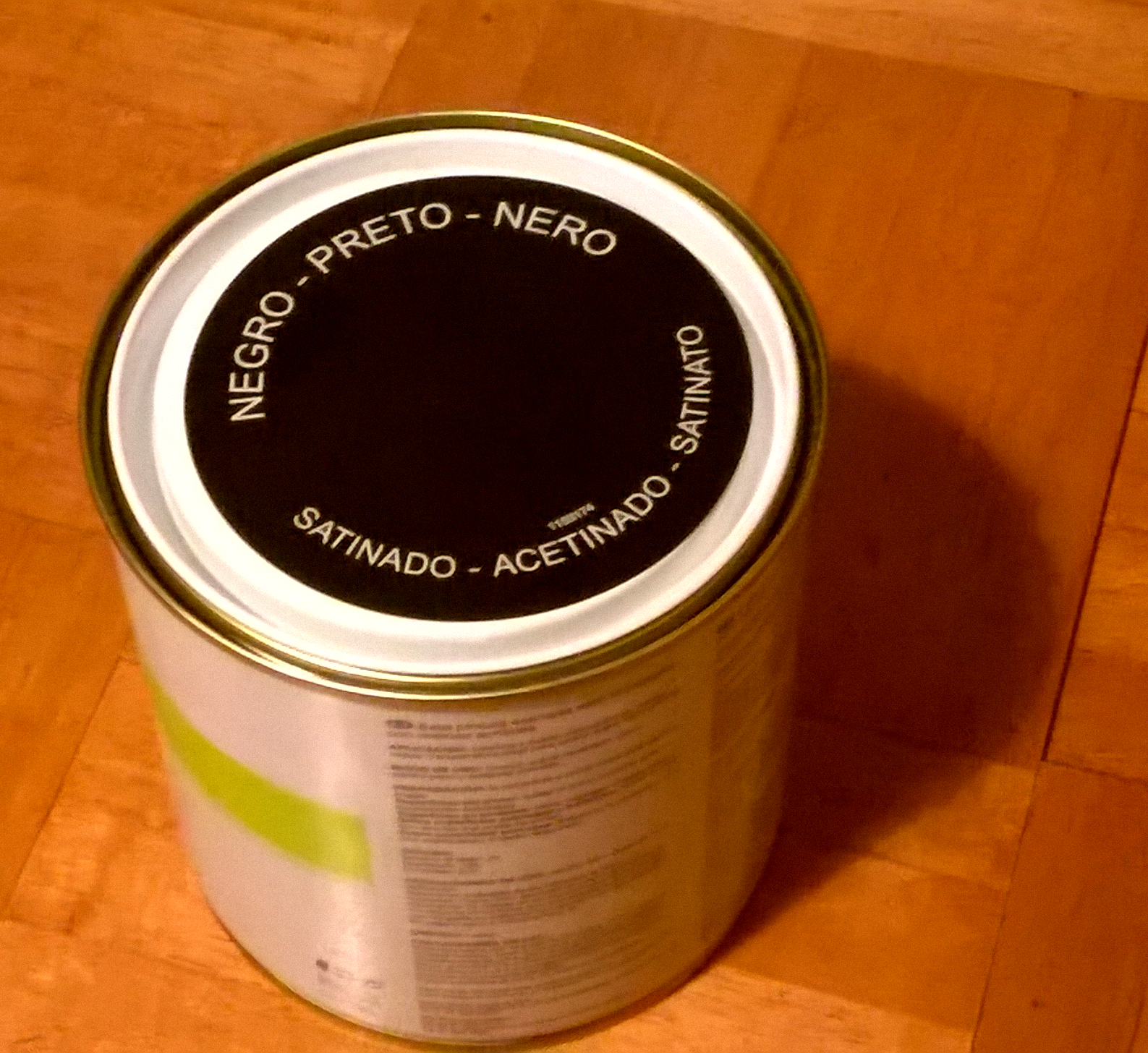
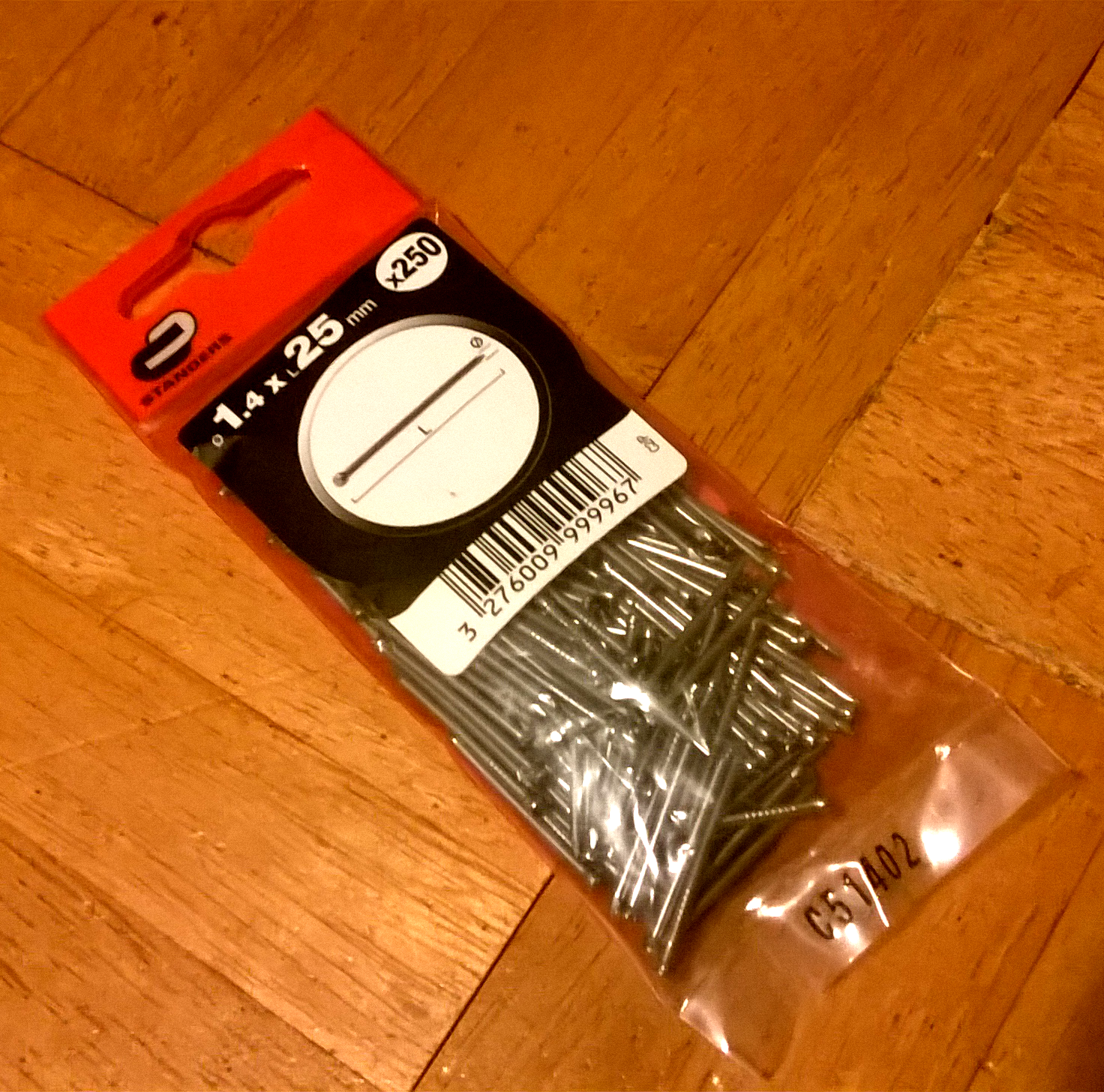
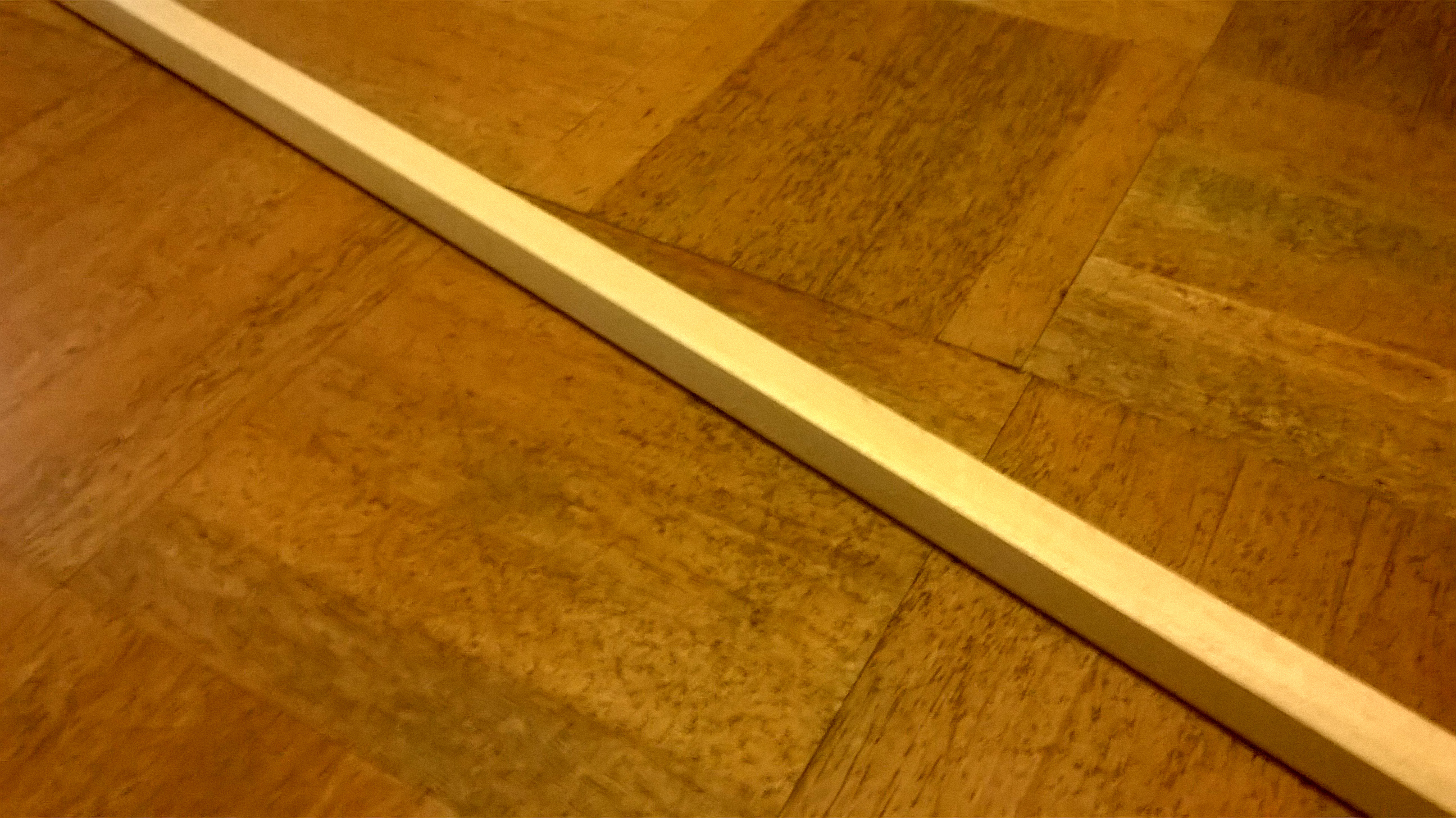
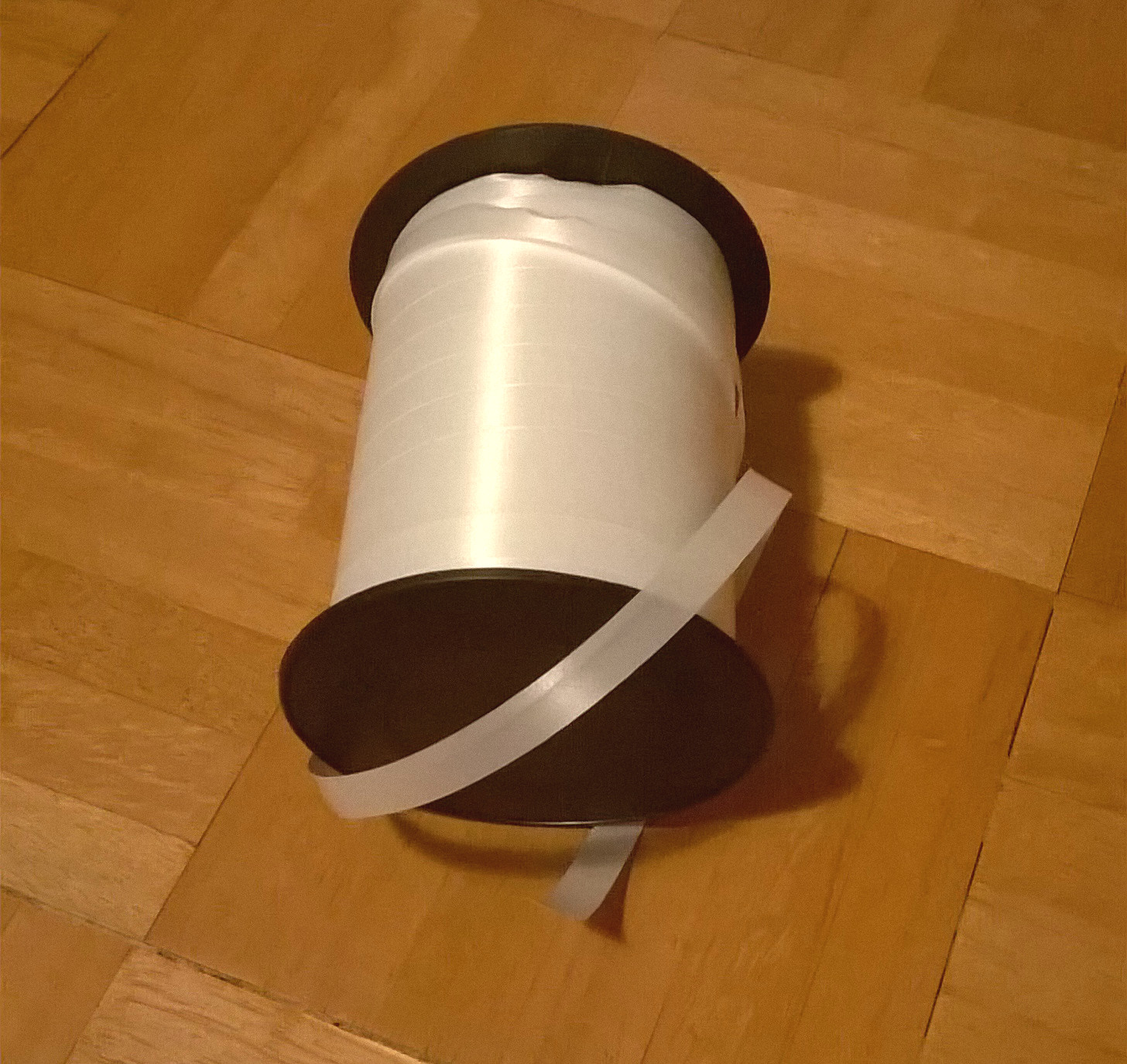
For this project I've used:
- One 1.5cm x 300cm x 800cm solid wood panel
- Acrylic satin black paint
- At least 135 25mm long nails
- At least 2.2m of 1.5cm x 1.5cm wooden splint
- At least 30m of 1cm wide white ribbon
- An hammer (Not in the pictures)
- Glue (It must be able to past easily two pieces of wood) (Not in the pictures)
- A paintbrush (Not in the pictures)
- Ruler (The longest you have) (Not in the pictures)
- Pencil, eraser, pen (Not in the pictures)
You can buy everything for less than 15€ (~18$).
Preparations
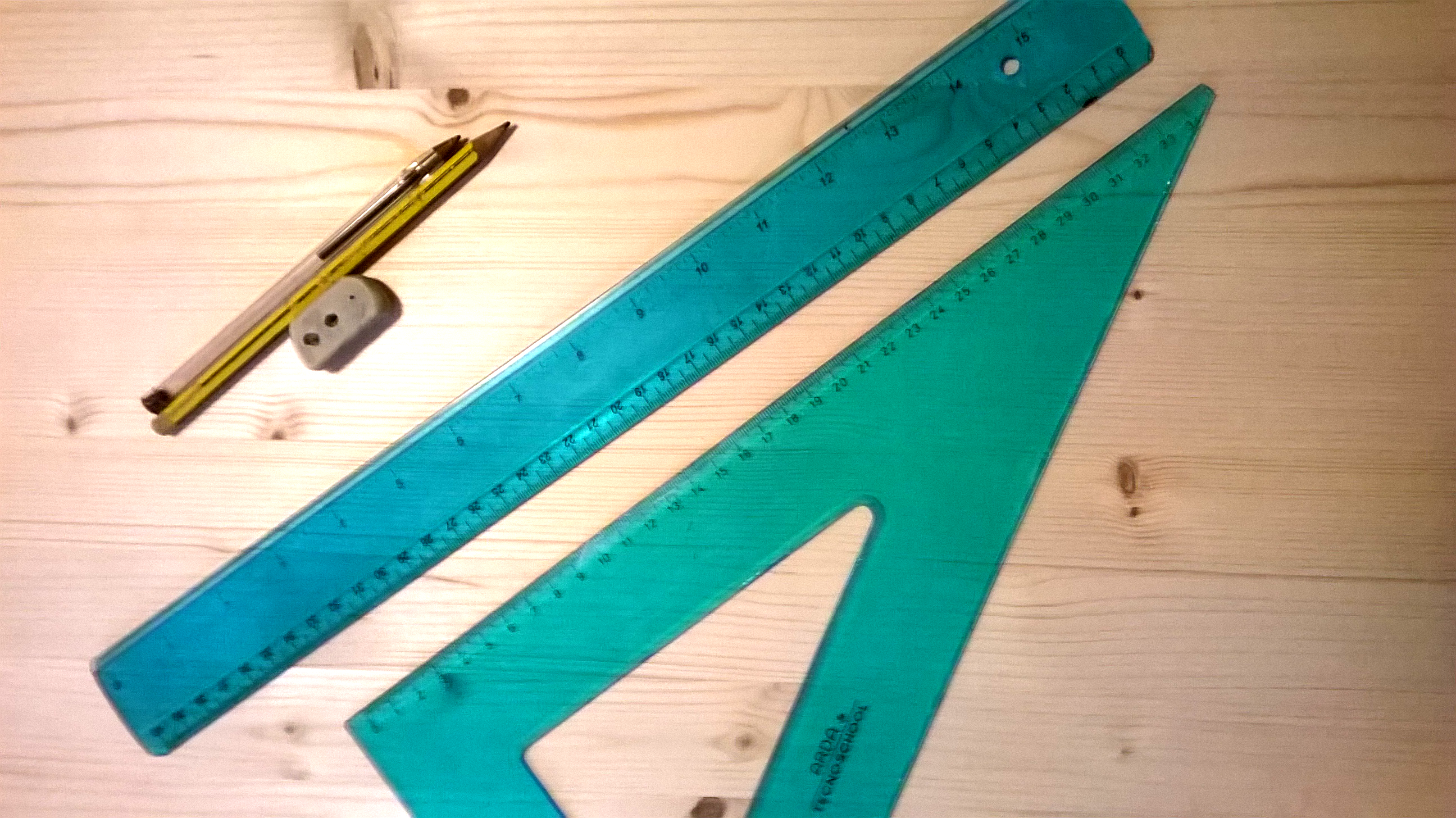
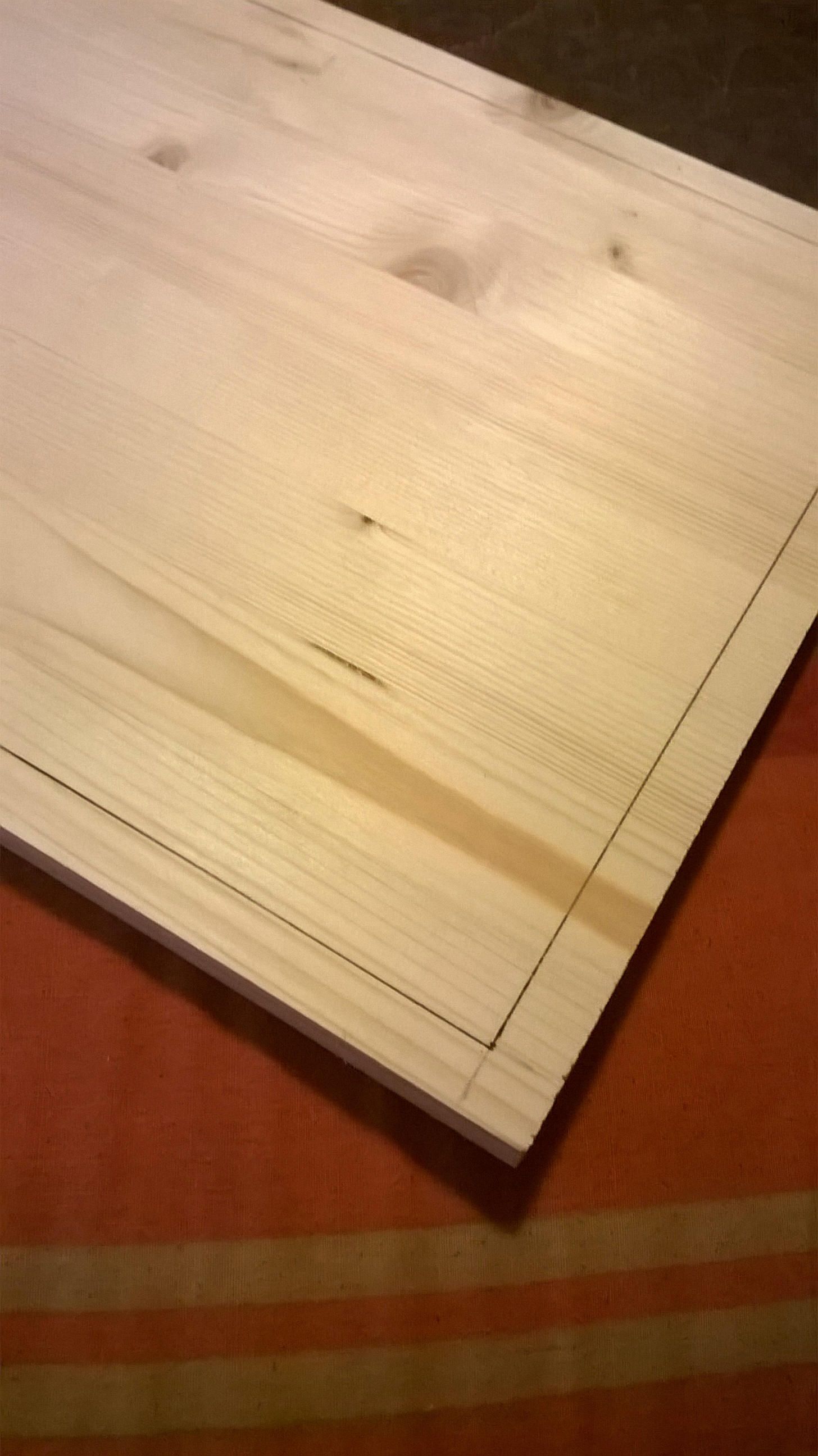
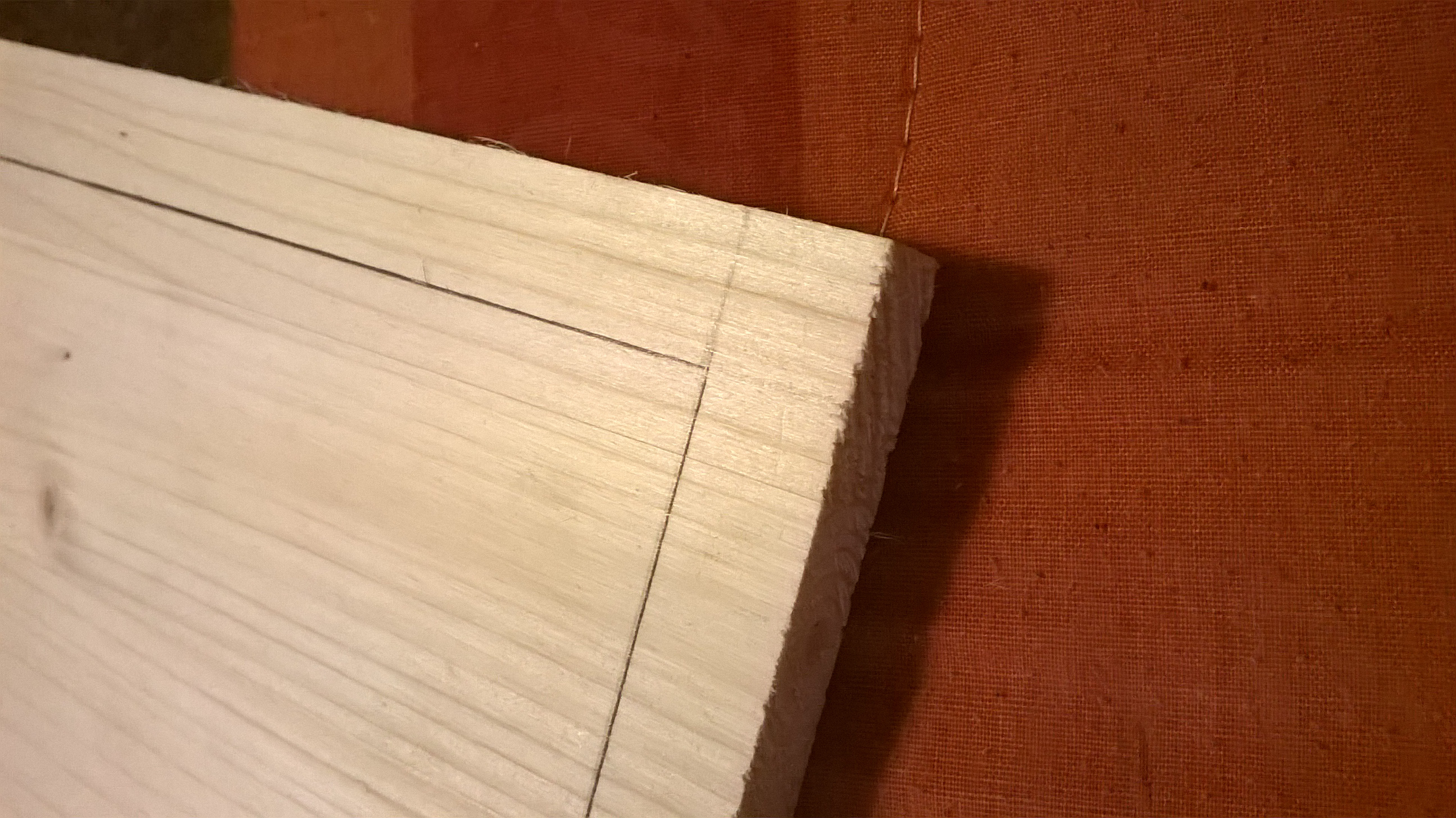
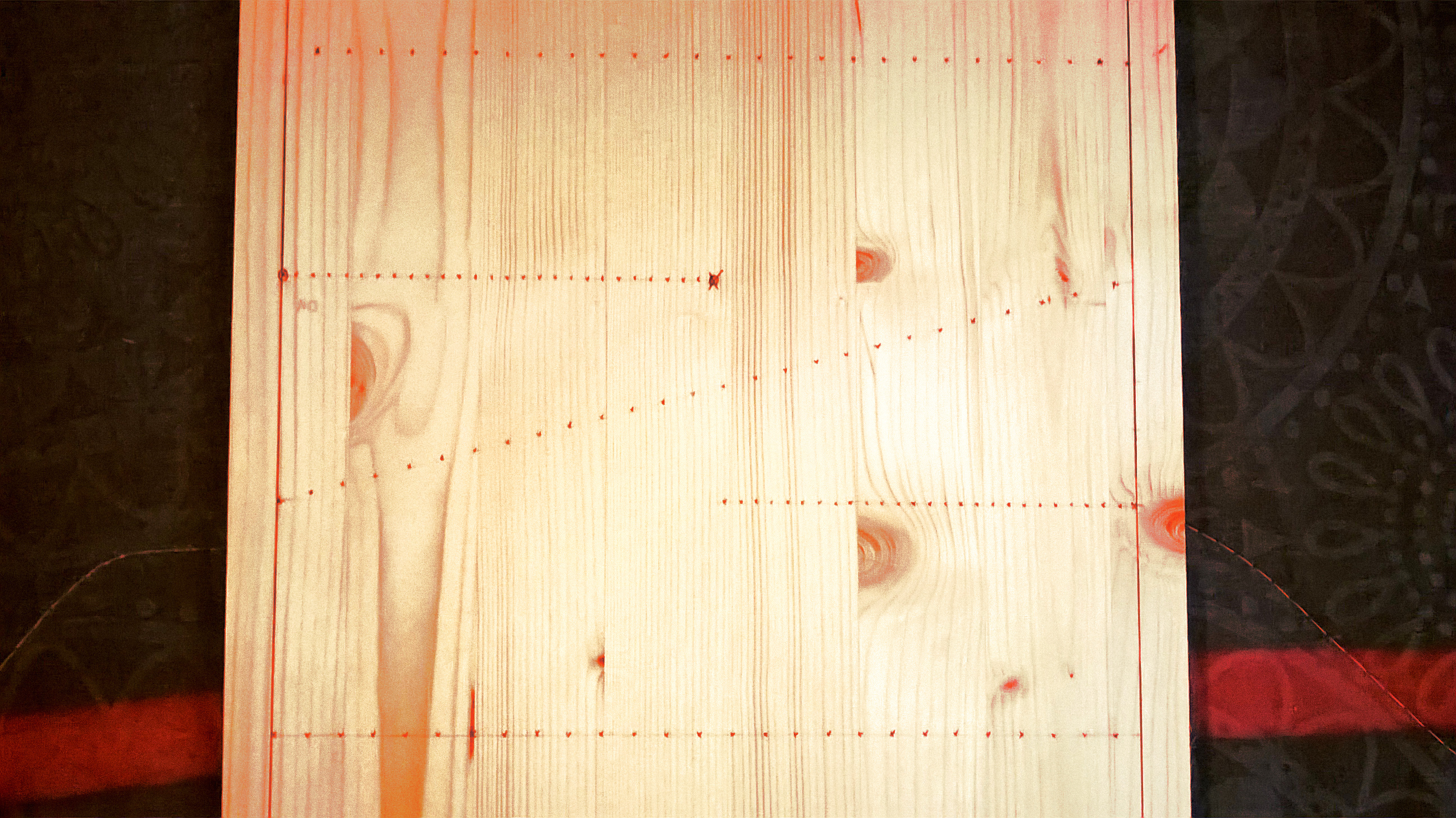
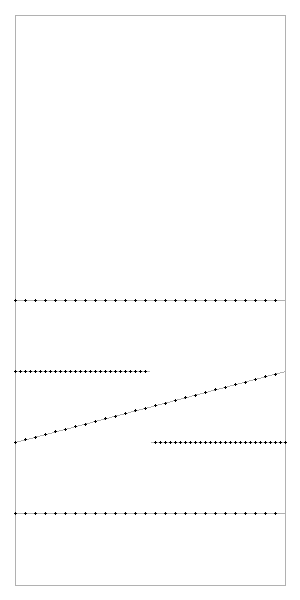
First of all, we have to draw the points where the nails will be placed.
To do this, we begin to draw four lines distant 1.5 cm from the edges of the panel as shown in photos 1 and 2; here will find its place the frame that we will manufacture later.
In second place, we need to draw four more lines: one in the middle of the panel length, other three so that an half of the panel is divided in four equal parts. The last one runs diagonally from the end of the 2nd line and the beginning of the 3rd. Now we have to erase the second half of the 2nd line and the first half of the 3rd. (Images 4 and 5 for reference)
Now it's turn for the nails spots. We have to outline 27 points for each of the five lines.
Remember that:
- The distance between nails in lines 1 and 5 is 1cm
- For lines 1 and 5 we need to begin drawing the spots from the left side
- The distance between nails in lines 2 and 4 is 0.5cm
- For line 2 we need to start from the left side
- For line 4 from the right side
- The distance between nails in line 3 is ~1.03cm
- For line 3 the nails start from the left side
(Images 4 and 5 for reference)
Nail It and Paint It
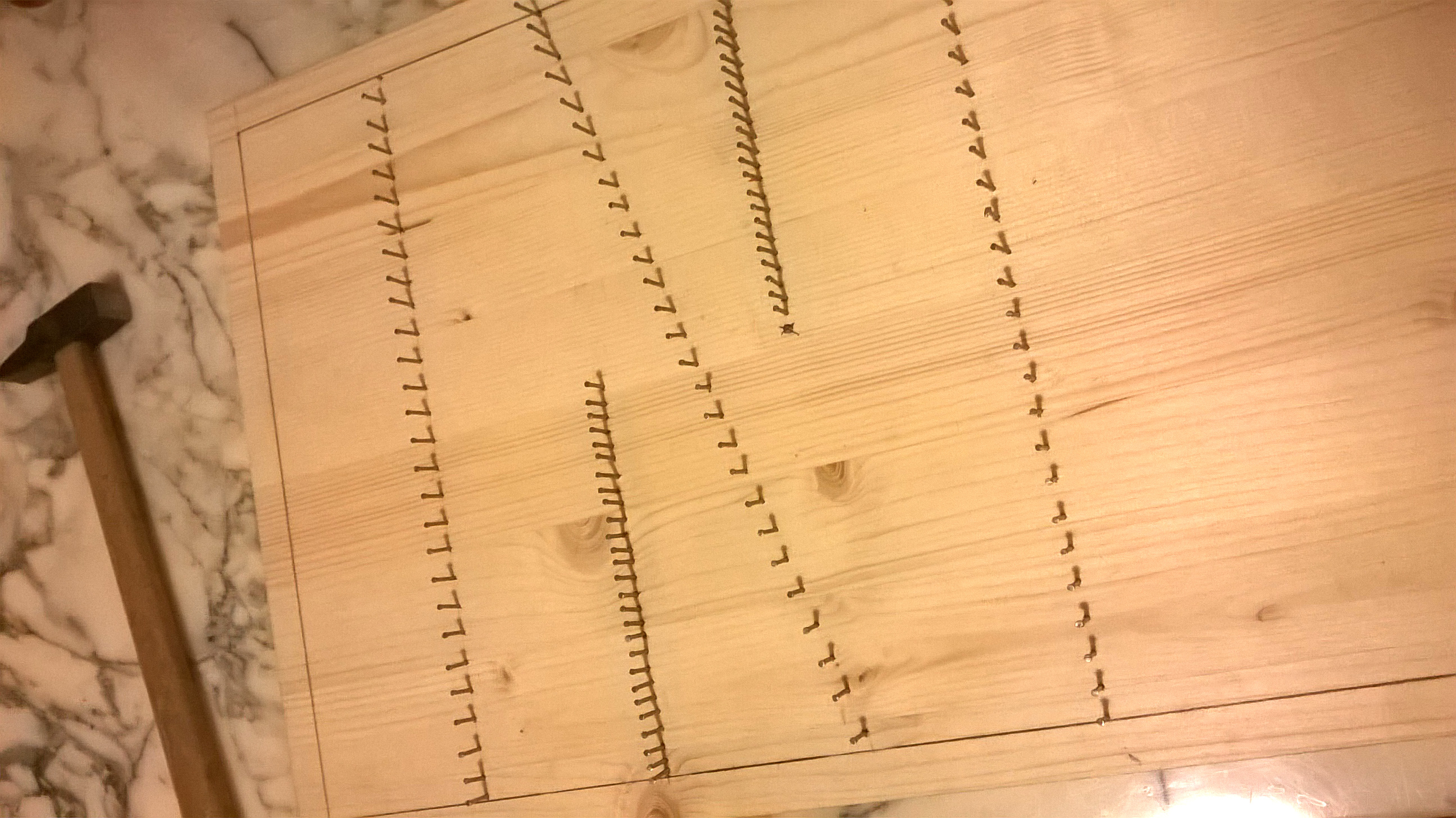
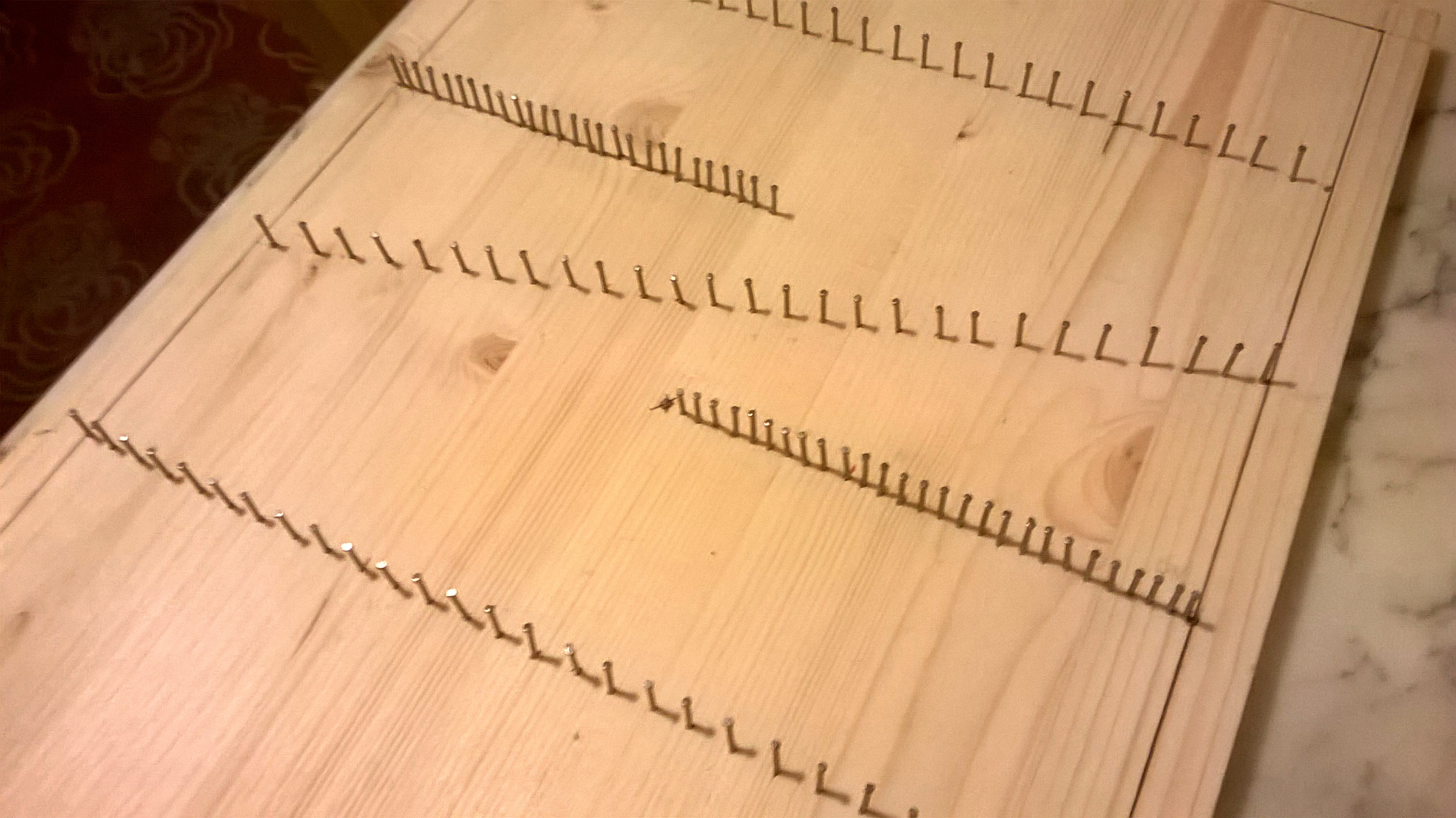
Now is the time to hammer some fingers!
Take the nails and start to hammer them into the spots. If you are using the 25mm long nails as suggested, you have to push them inside until they stops (the panel is 15mm thick so the nails will peep out of 1cm). The hardest parts are surely rows 2 and 4 because the nails are very very close (only 5mm of distance!) but, even if it was the first time that I've nailed something, I managed to do it without excessive problems. Images 1 and 2 show the finished work.
After that every nail have found its place, we have to paint the freshly nailed panel. So, pick up the acrylic paint and the brush and start to paint it. Be careful to not leave paint drops between nails, especially the ones of rows 2 and 4. We'll need at least 3 coats of paint, because the solid wood absorbs a lot of paint. (I forgot to take photos immediately after the painting, so no photos, sorry!)
The Magical White Ribbon
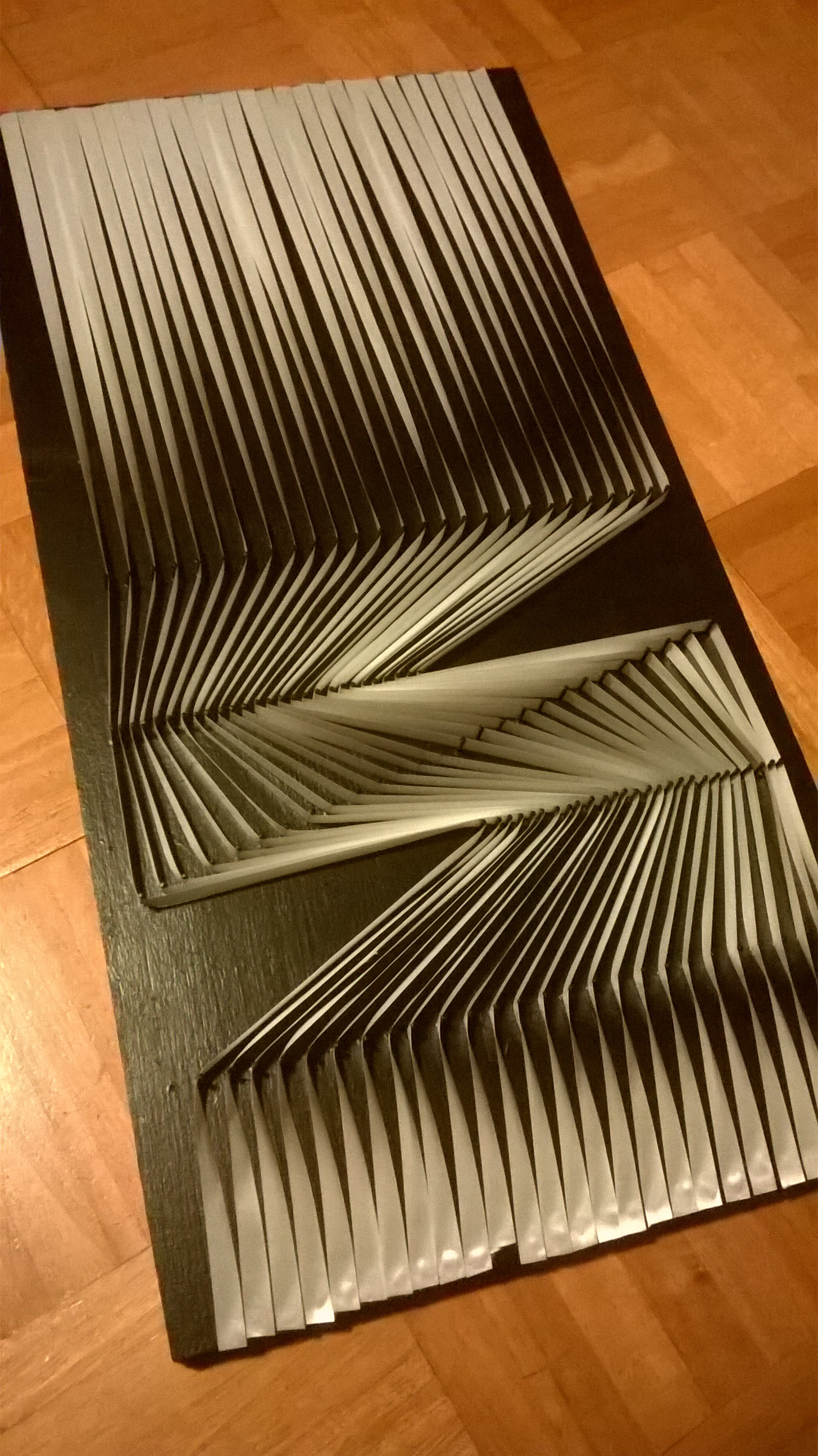
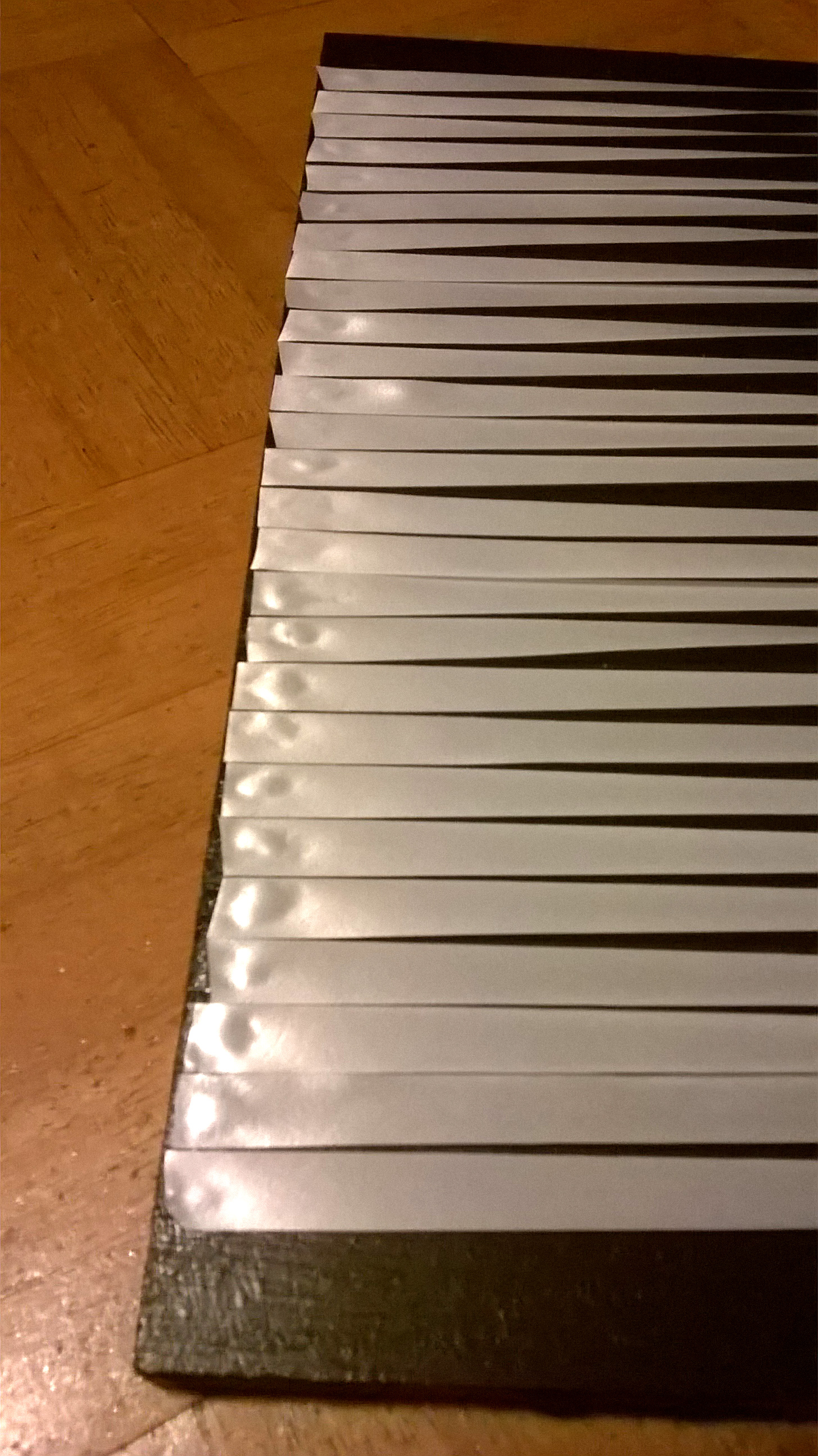
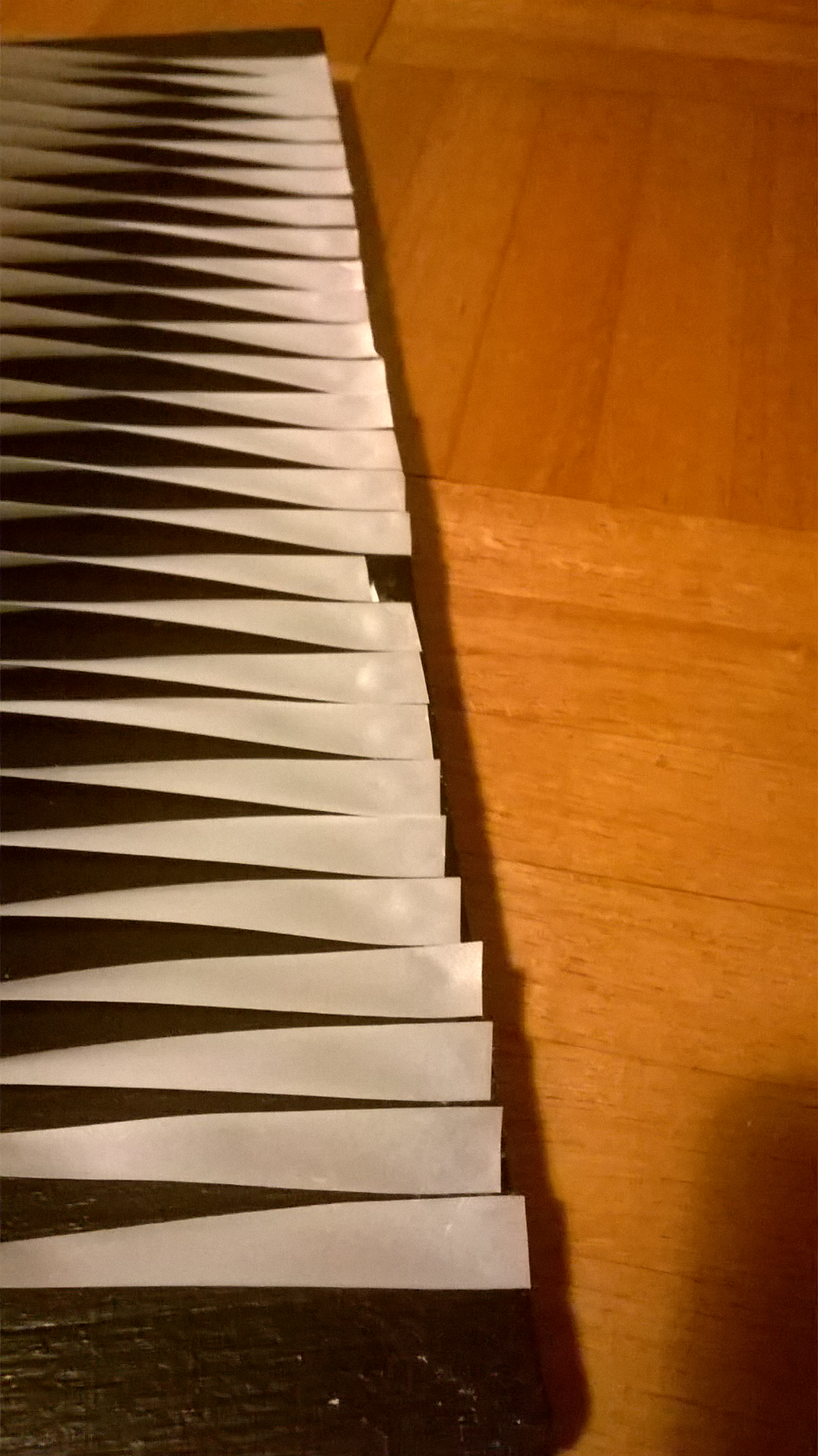
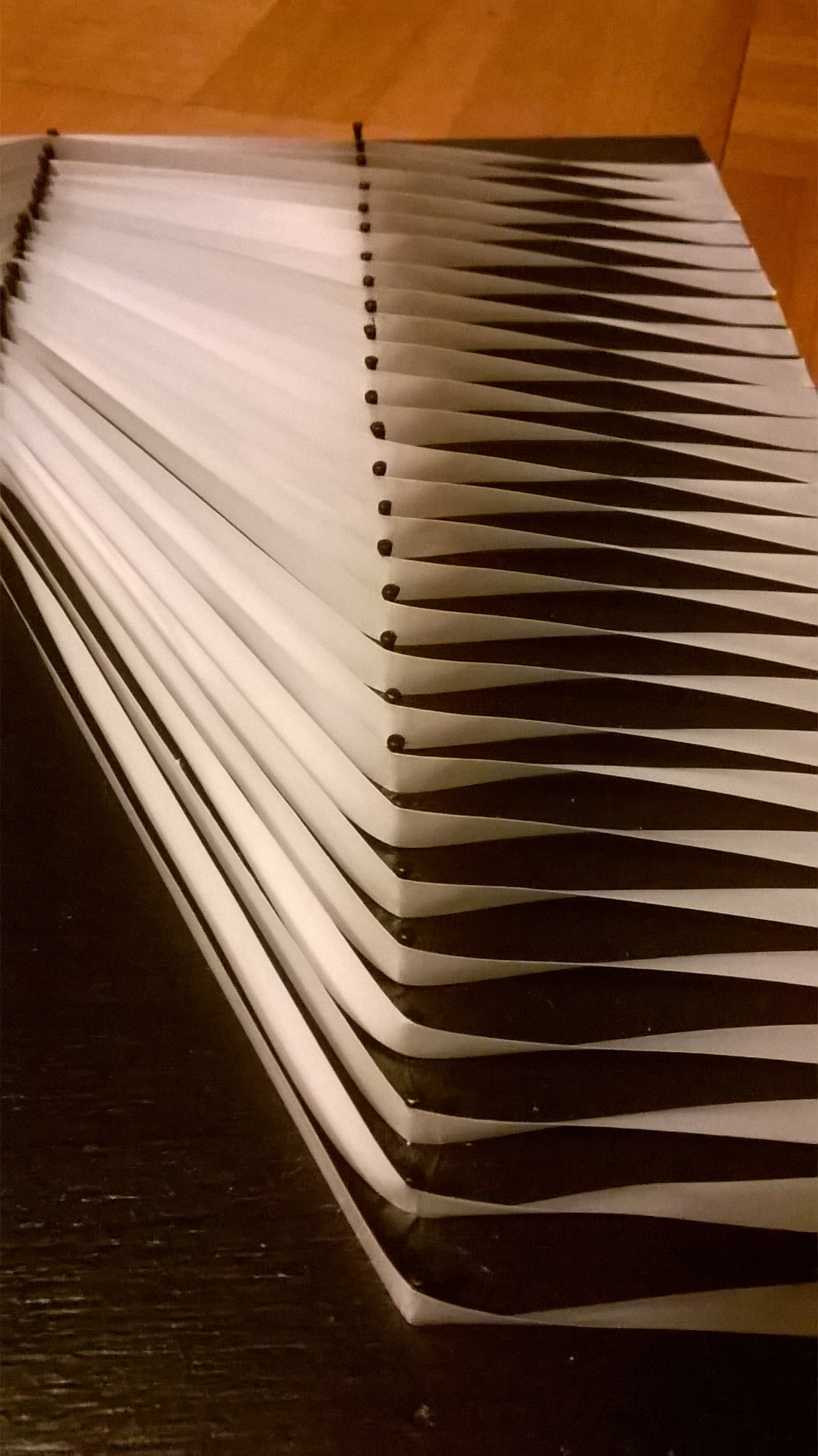
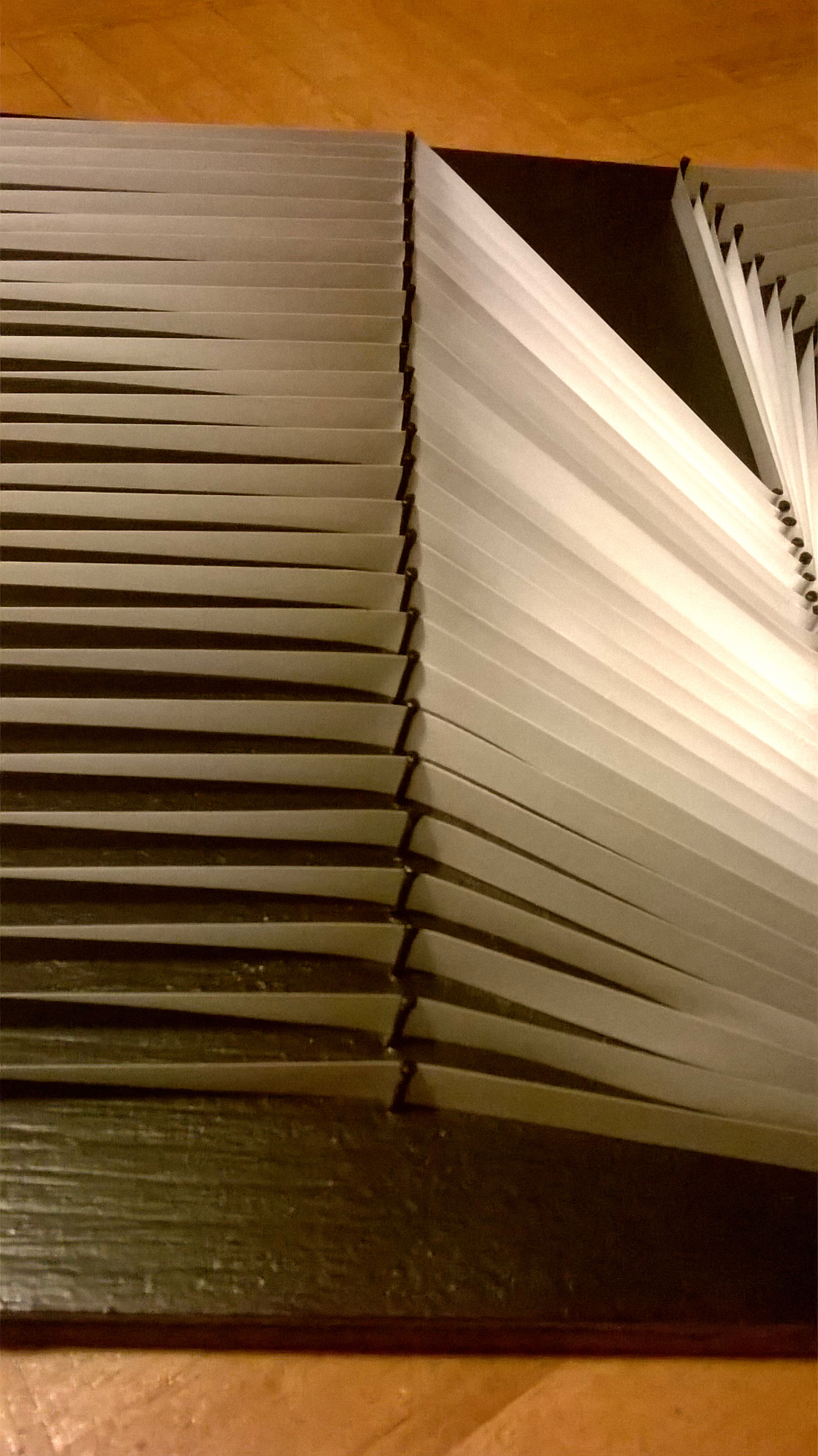

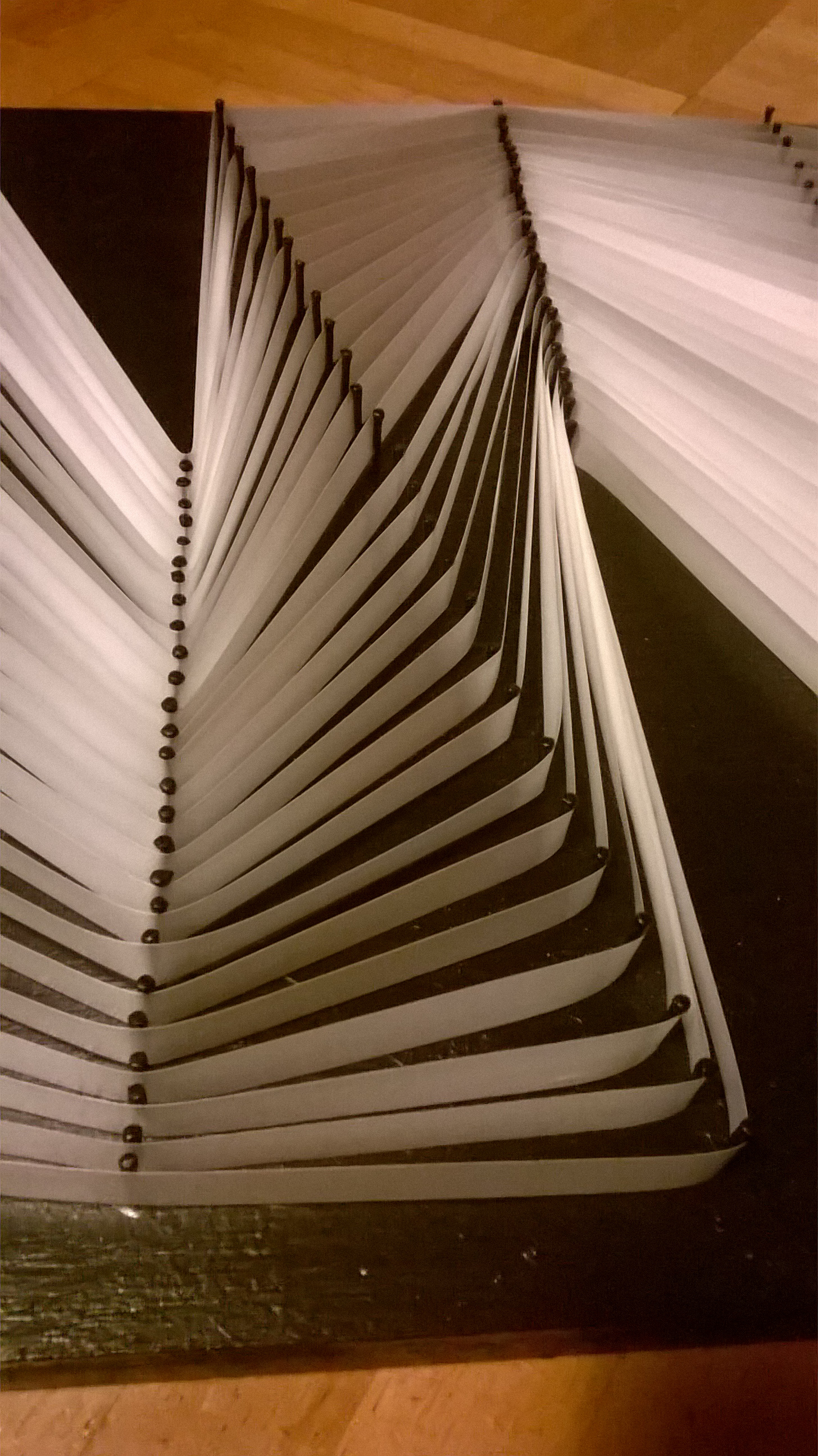
Now cut 27 80cm long pieces of white ribbon and glue them all to an end of the panel, as shown in picture 2. Make them pass between the nails as illustrated in pictures from 4 to 7 and glue them to the other side of the panel (image 3). The final result is shown in picture 1. I don't know how to explain this better than that: I think the pictures self-explain themselves...
The Frame and the End
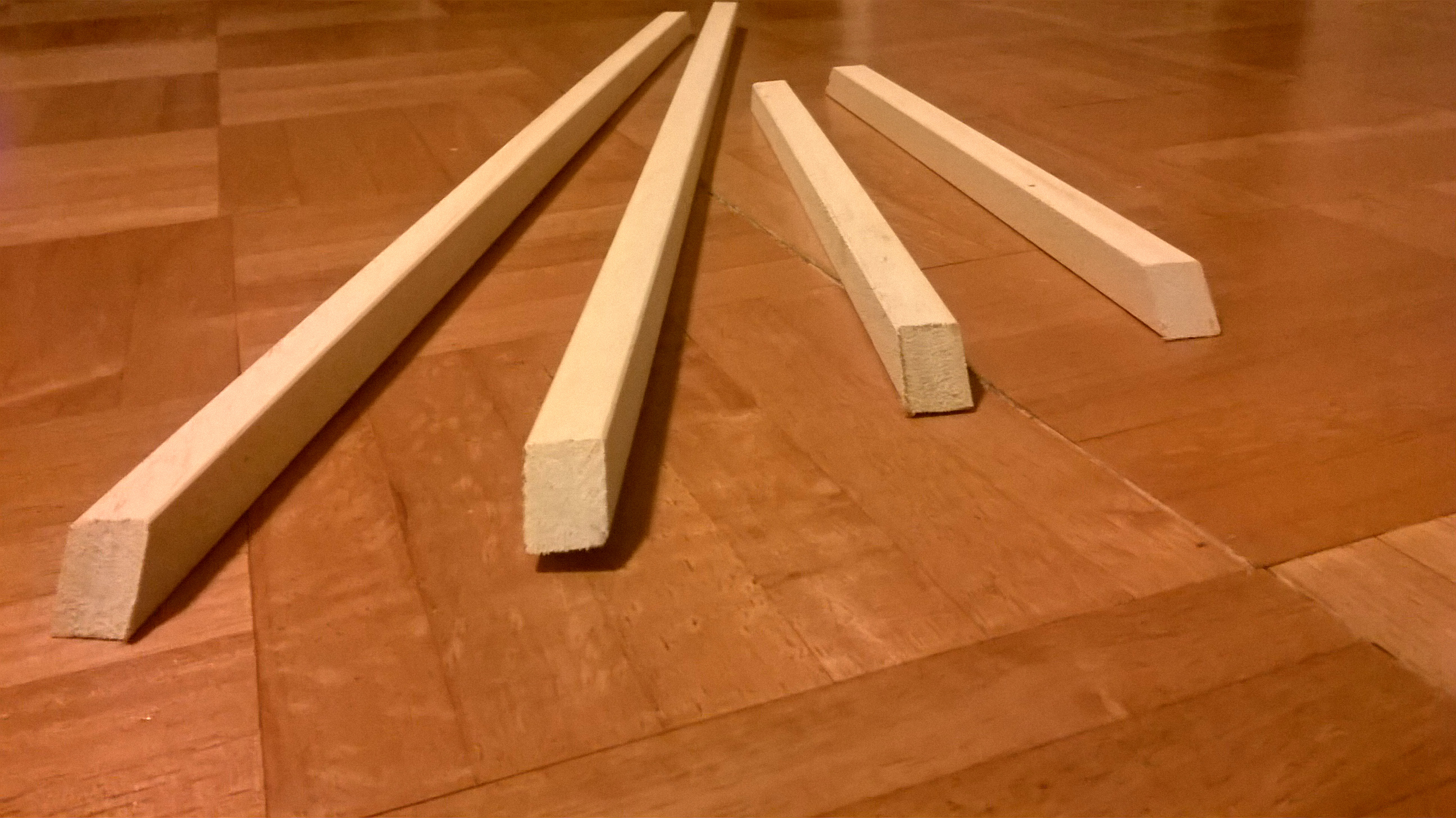
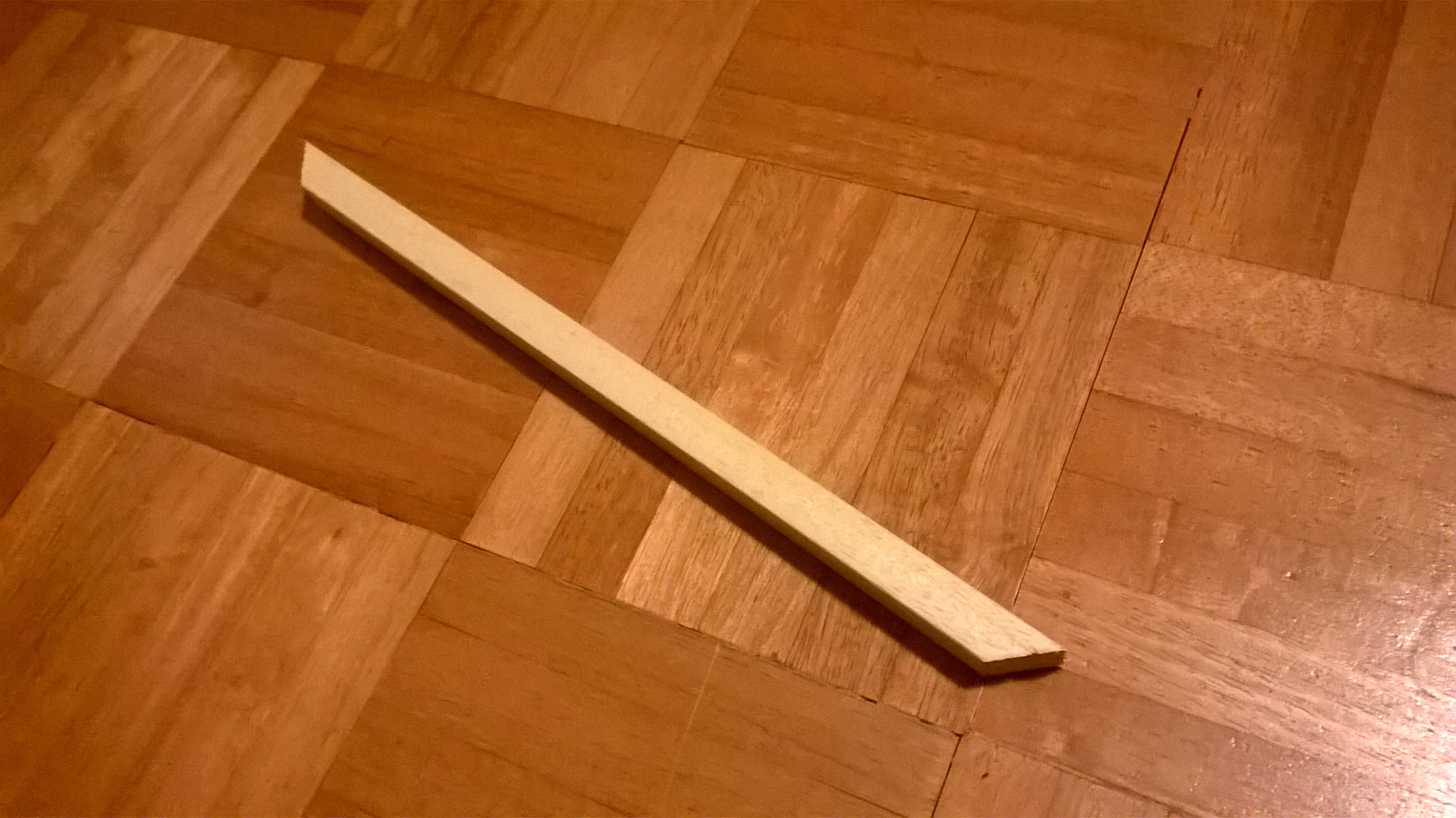
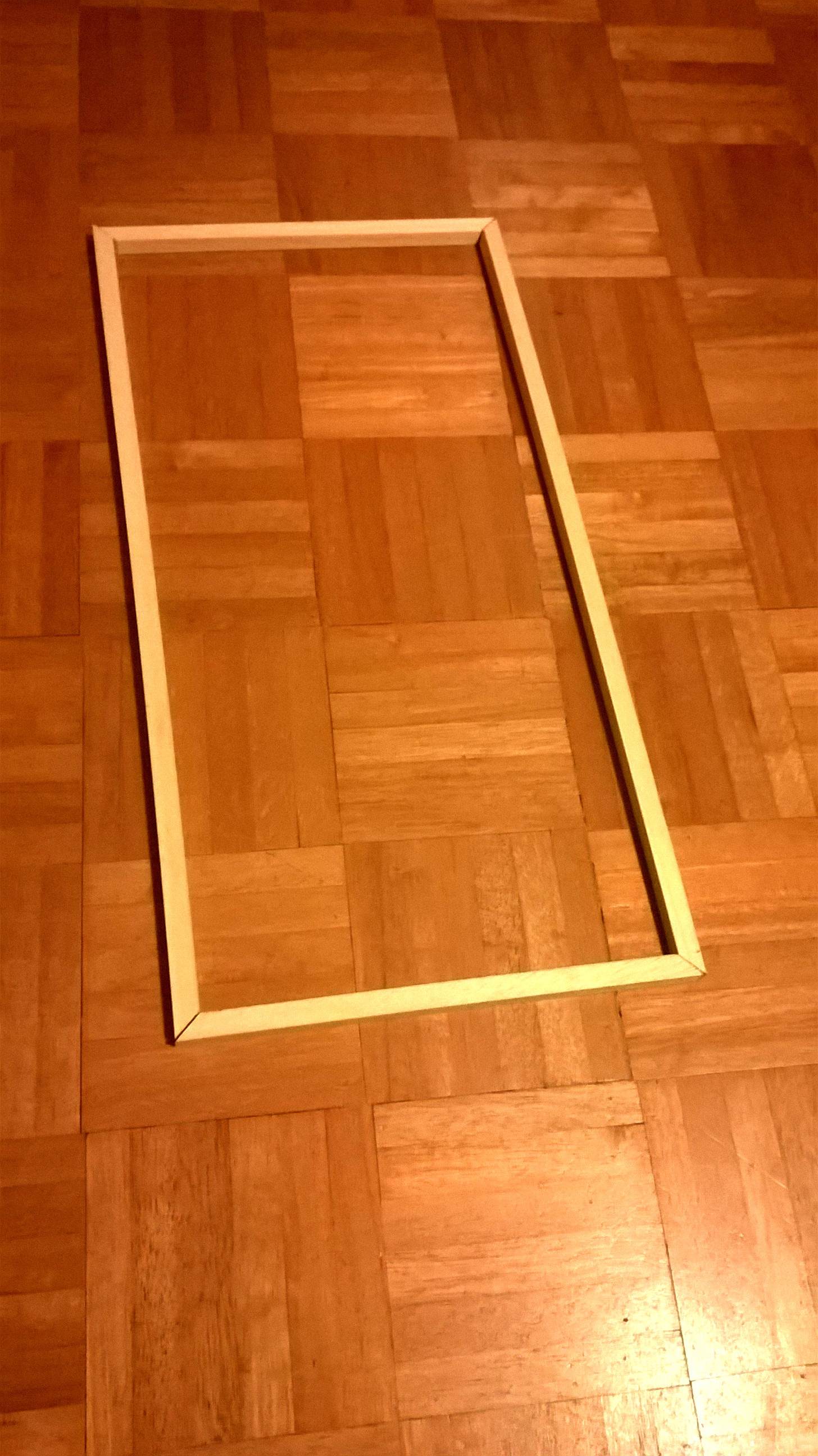
Pick up the splint and cut from it two 30cm and two 60cm long pieces. Cut them with 45 degrees cuts so that they will fit in the frame shape as shown in picture 3. Then glue the pieces together (I've putted some nails for helping myself) and paint the frame with 2 or more paint coats. In the end glue the frame to the panel. (I've lost the photos of the painted frame, sorry!)
Put your work of art on a wall where you pass in front of often so you can enjoy the effects it produces!